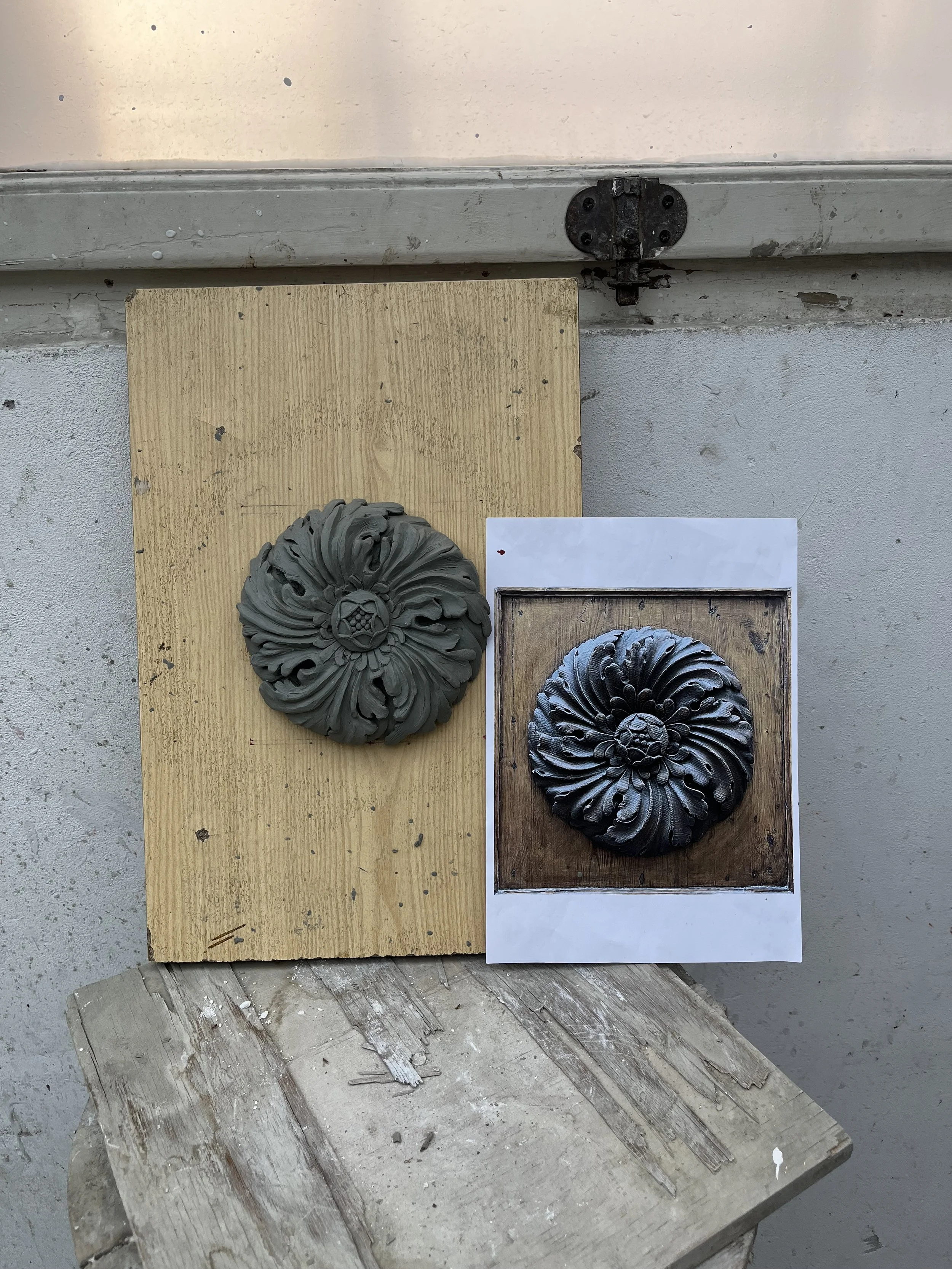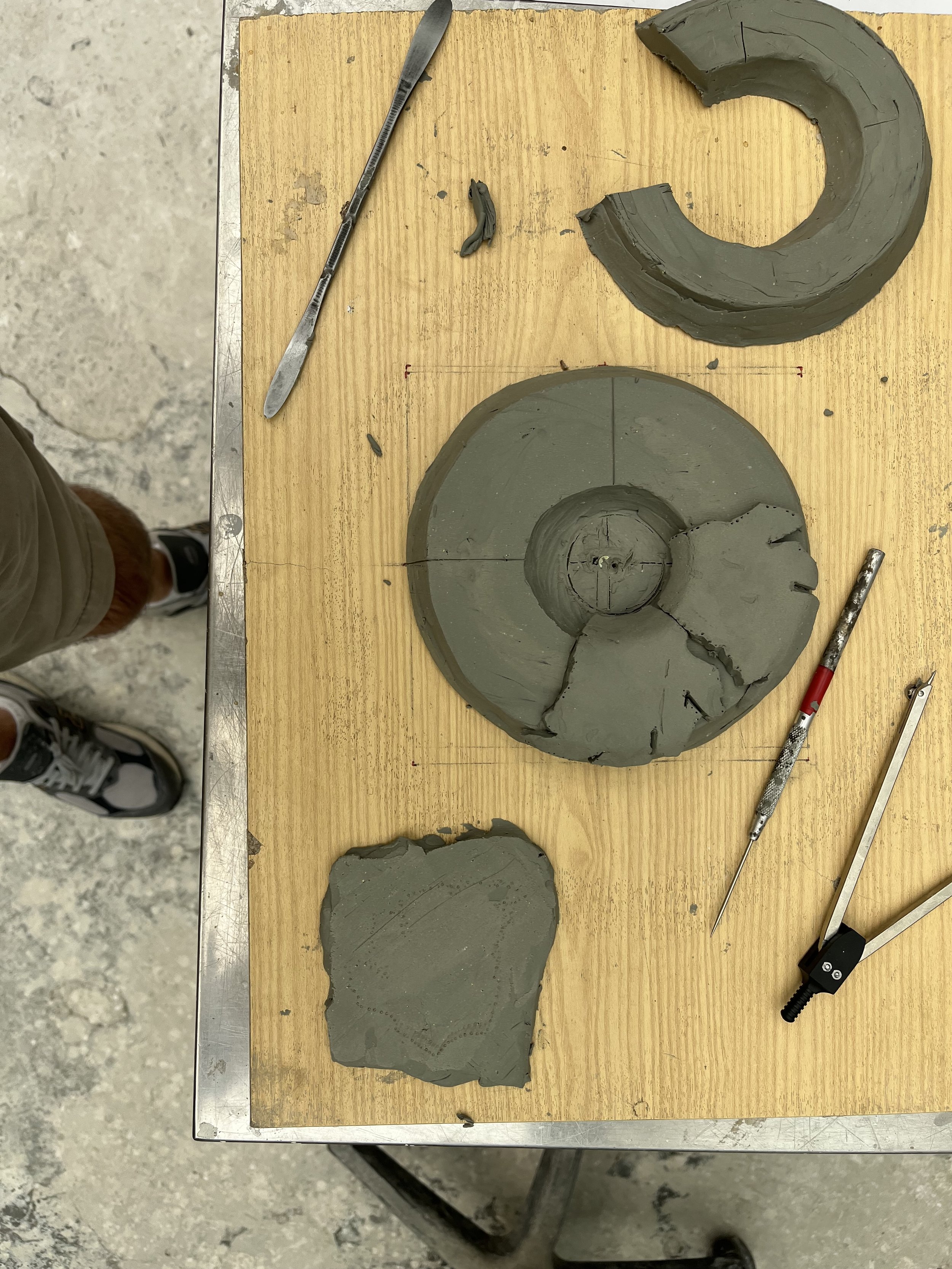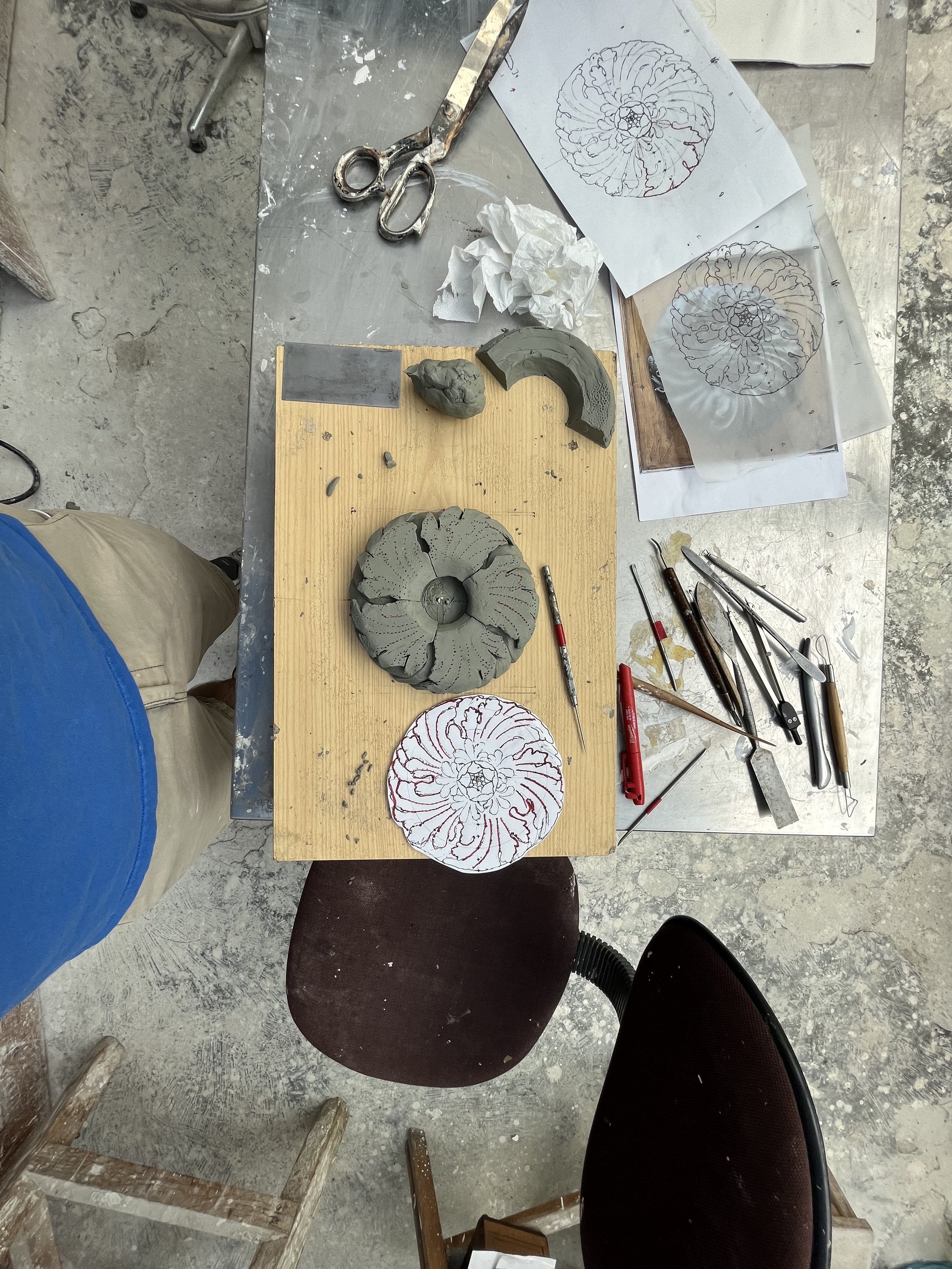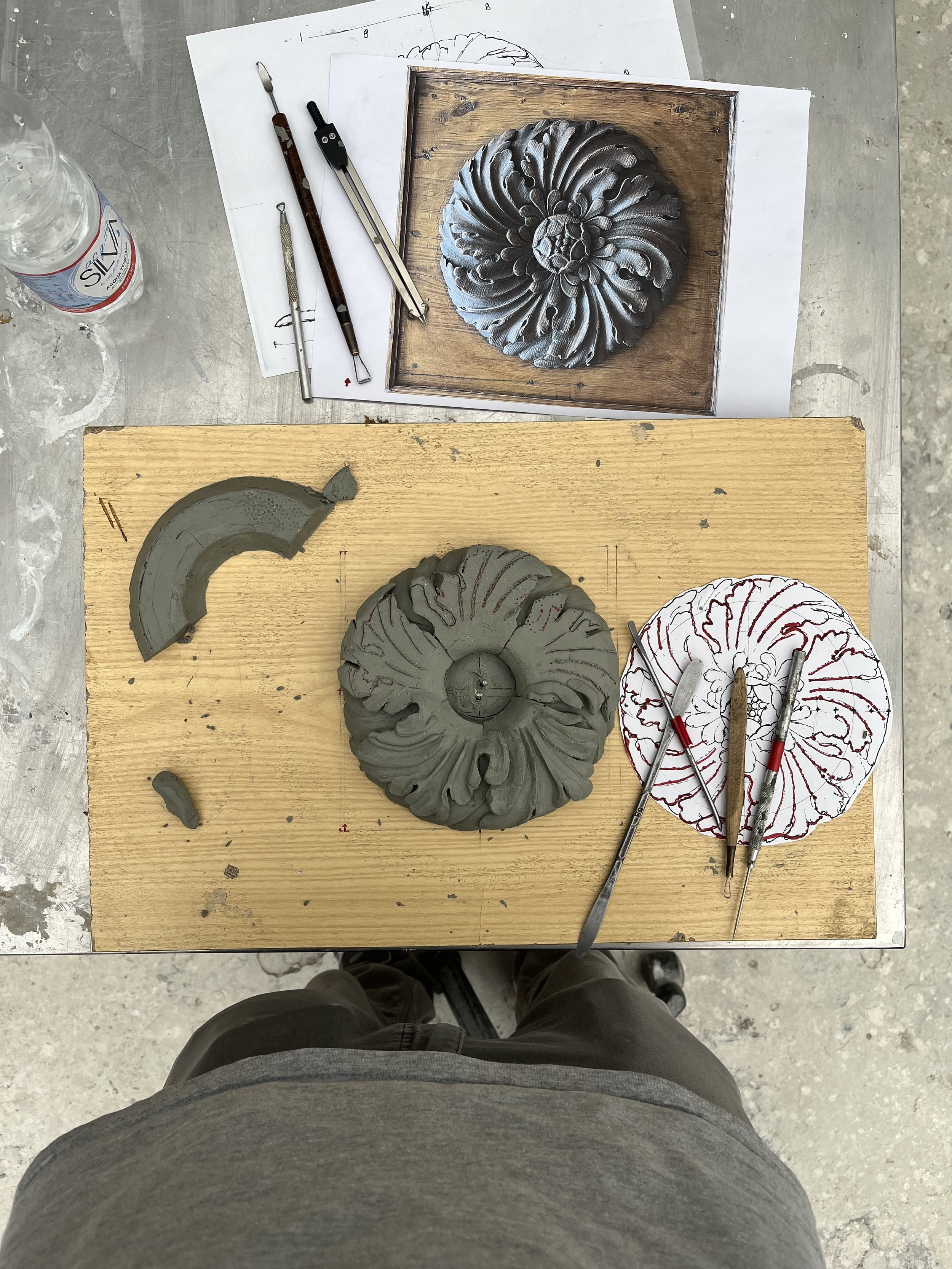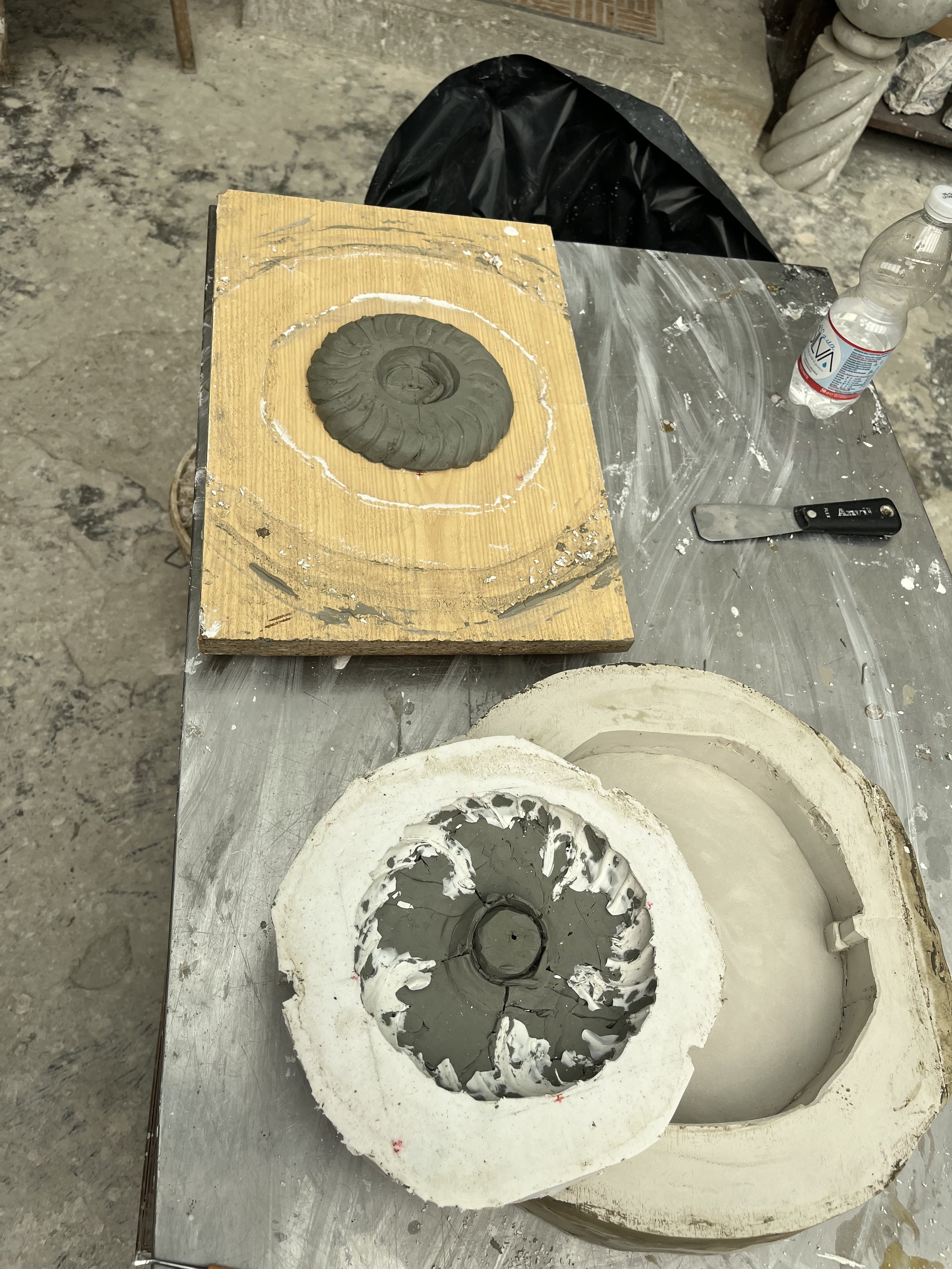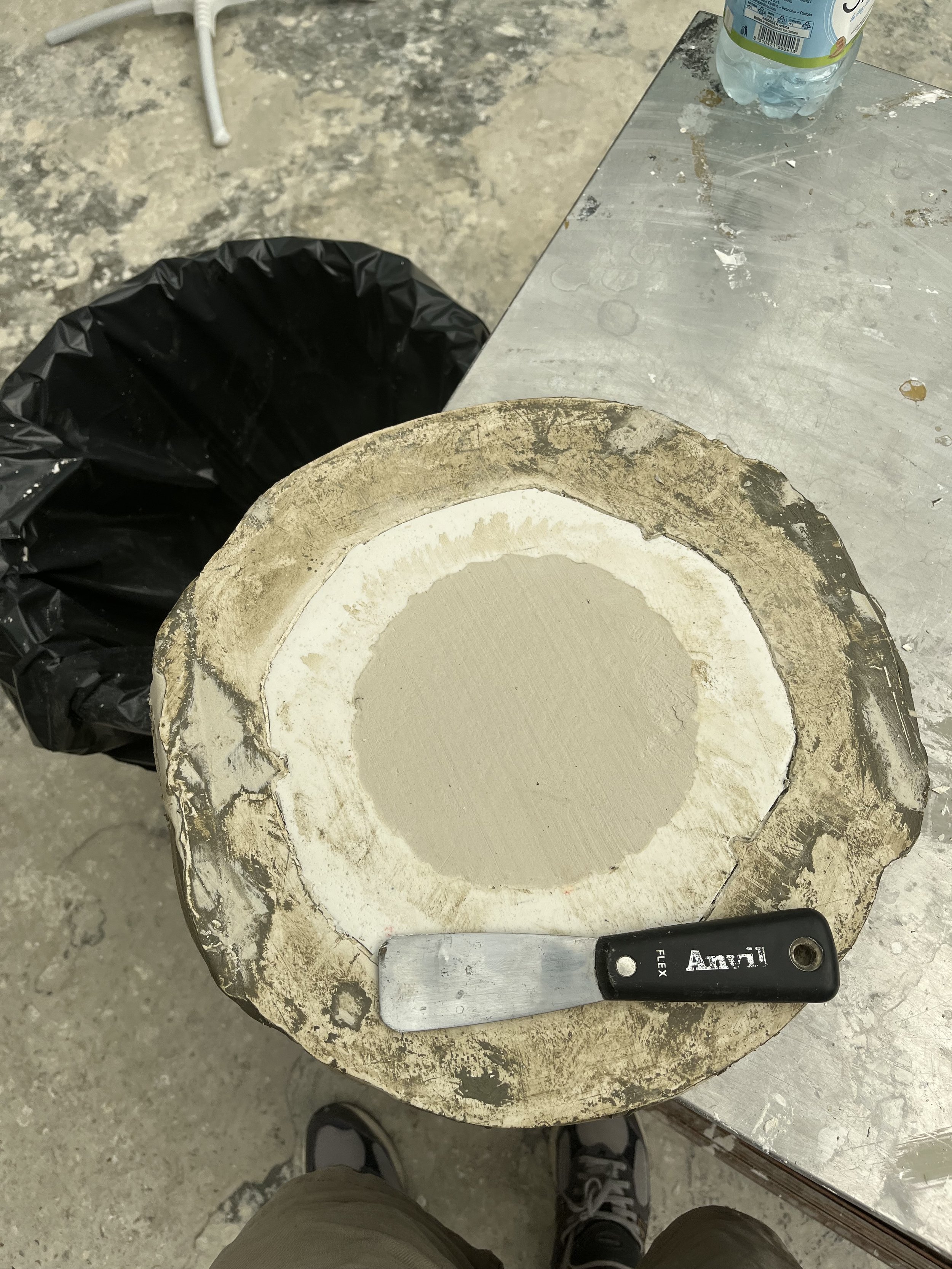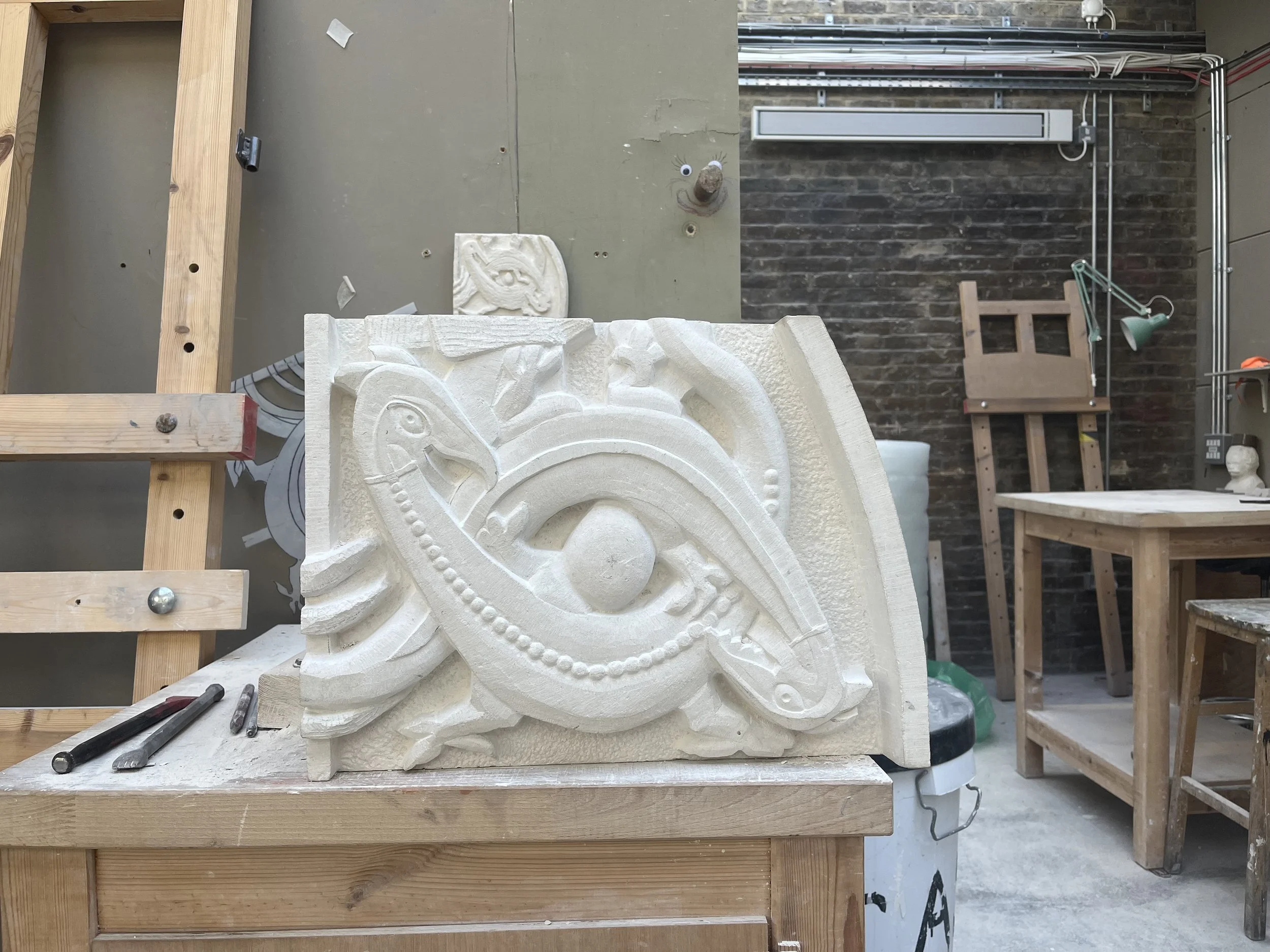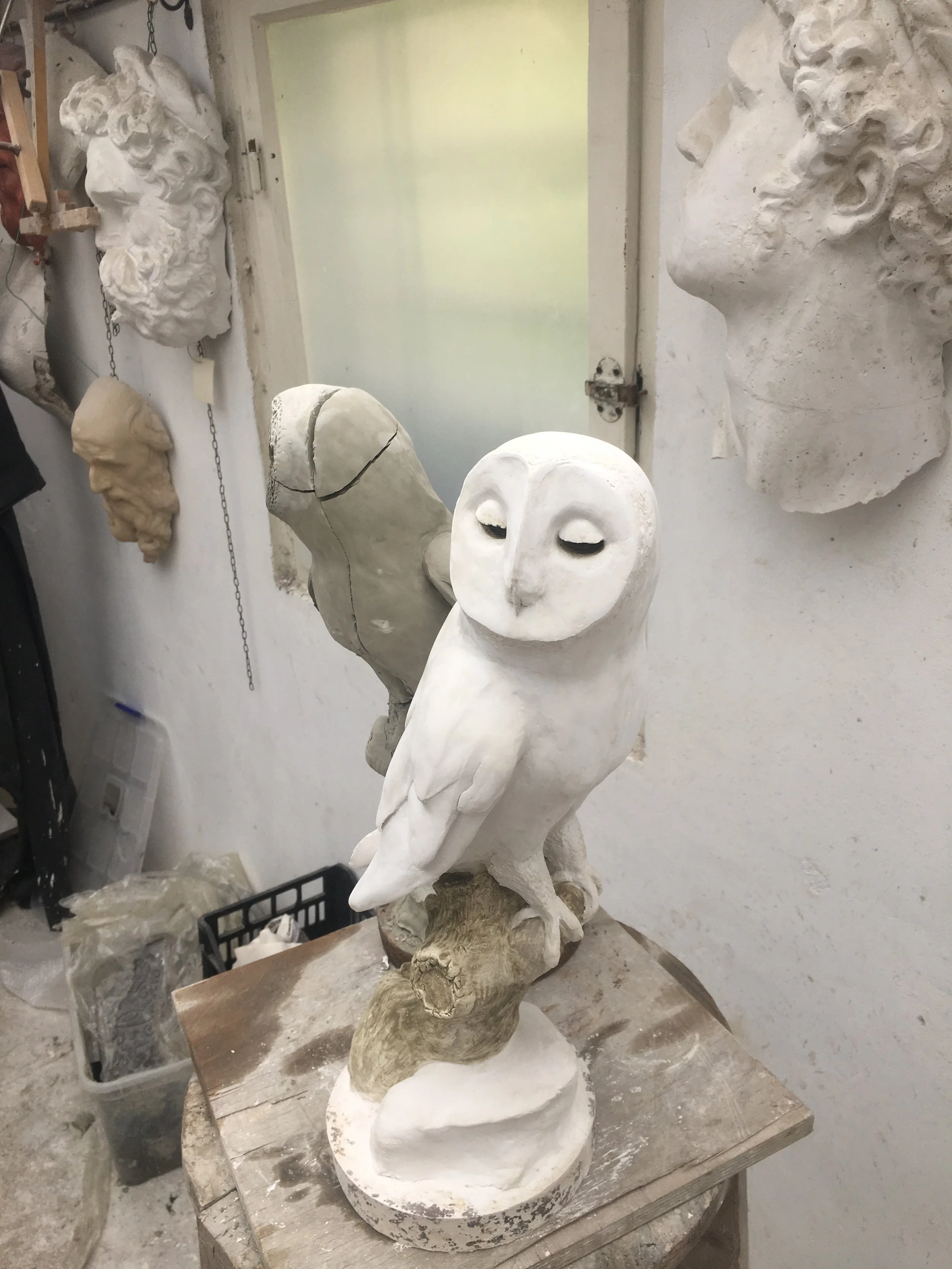Copying a Rosette from a door in Florence
A collection of Rosettes on a Florentine door
In this project I wanted to experiment with copying something from a photo. Many times I have seen something interesting on a building and wondered if I could copy it. How would I do it if asked to do so on a job? I didnt know so wanted to try to find out, and discover any issues that may appear if I was ever asked.
For the first step I needed a good reference photo. I tried to get the camera as close to 90 degrees from the center as possible.
I then printed the photo close to life size and traced it on to tracing paper.
I then placed screws into the wood for support and made a rough disc corresponding to the drawing
Once I had the basic shape down I tried to break the drawing into several repeating shapes as the original design probably had.
I then used an awl to punch through the major lines of the drawing down into the clay so i could see them.
Once the lines were applied I could model depth to the leaves
When placed vertically i can see that the design got distorted, probably because my original photo was not quite centered.I then try to correct this.
For adding softness i experimented using turpentine and rubbing alcohol. sometimes the turpentine could be too strong. so i would start with the rubbing alcohol and if it still needed softening i would switch to turpentine.
Using paint brushes to apply the solvents
At this point I decided it was close enough to move on to casting.
Constructing a clay dam around the piece to be cast
Liquid silicone is poured in.
Plaster is then poured over the mould
When dry the clay is removed from the mould.
Once cleaned new plaster is pored into the mould to make the casting
The casting is then removed from the mould to be cleaned and touched up.Ideally refinements could be made in plaster and then recast for a higher detailed version. Due to the nature of clay I could not get the detail I wanted in the first cast but I would like to experiment taking this project further. Unfortunately I ran out of time, and had to travel home.

